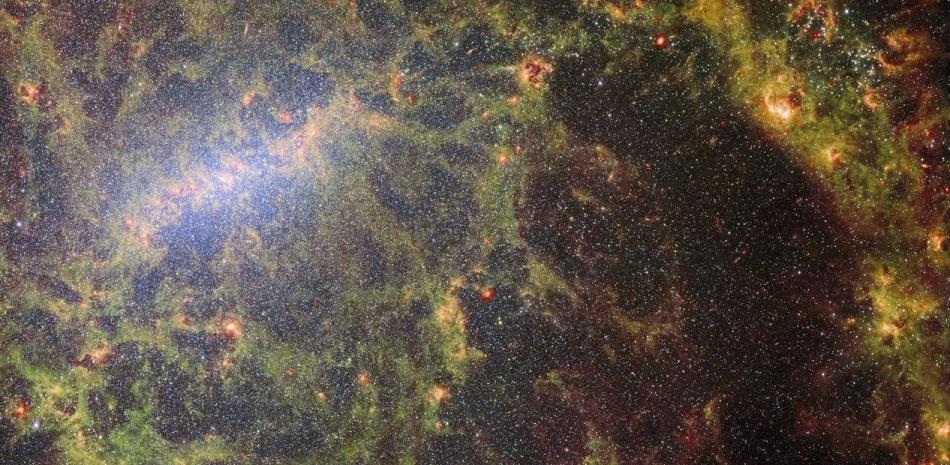An international collaboration with Spanish participation has published the first catalog of cosmic distances, with data on millions of distant galaxies and their distances, with unprecedented precision, visibility and depth.
Carried out by the PAUS project, which involves 14 participating institutions from six countries, the catalog was produced with data collected by the PAUCam camera over 200 nights between 2015 and 2019, from the Willian Herschel telescope in La Palma, Spain. Specially designed for measuring distances to galaxies.
All of the data from the table are being published this Wednesday on the PAUS website, the CosmoHub portal, and in two articles published in the journal “Monthly Notices of the Royal Astronomical Society,” one on measuring distances and the other on PAUS's calibration. data.
The mapping covers a 50-square-degree area of the sky, roughly the size of 250 full moons, and includes data from 1.8 million astronomical objects, allowing astronomers to create more precise maps to understand how things evolve. Studying structure in the universe, as well as dark matter and dark energy.
The accelerated expansion of the universe is due to dark energy, which accounts for 70% of the universe, but whose nature is unknown. PAUS mapping will shed light on this puzzle, as it provides a precise and complete characterization of millions of galaxies located more than 10 billion light-years away.
“PAUS Mapping offers a revolutionary approach to cosmic mapping, made possible by the design and mapping of a novel instrument dedicated to collecting and analyzing data like never before. It's a privilege to collaborate with such a talented and reliable team,” says Director of PAUS Mapping. , Enrique Castañaga, professor at the Institute of Cosmology and Gravitation at the University of Portsmouth.
Camera with 40 filters
The catalog represents a significant advance in cosmological research, providing optical redshift measurements that determine distances to galaxies that formed billions of years ago.
To obtain these measurements, the PAU camera uses 40 filters of different colors that represent narrow bands in the optical spectrum, a technique of photographing the same field multiple times through multiple color filters, and it allows the distance of an object to Earth to be calculated.
While cosmic spectroscopic surveys are equipped with large focal planes that allow them to measure the redshifts of thousands of galaxies simultaneously, PAUS does not need to preselect galaxies, but instead uses its 40 filters to measure the redshifts of 30,000 galaxies at once, albeit with low spectral resolution.
“Accuracy when measuring interstellar distances depends on the number of filters used, as each filter provides different information about the galaxy. The great advantage of PAUS is that it combines information from 40 different filters, allowing for very accurate distance measurements. This level of accuracy is critical to the study of the structure of the universe. , which requires data from a large number of galaxies,” says David Navarro-Gironés, a pioneer researcher at ICE-CSIC and first author of the papers published in MNRAS. .
PAUS is a collaboration between Spain, the United Kingdom, the Netherlands, Switzerland, Germany and China.
The scientific exploitation of the PAUS catalog data is led by ICE-CSIC, the Institut de Physiques d'Alts Energies (IFAE) and other institutions in Spain, the Port d'Informació Cientifica (PIC, managed by a centre. IFAE and CIEMAT), the Institute of Space Studies of Catalonia (IEEC). , Institute of Theoretical Physics (IFT-UAM/CSIC) and Center for Research in Energy, Environment and Technology (CIEMAT).




:quality(85)/cloudfront-us-east-1.images.arcpublishing.com/infobae/KTKFKR763RBZ5BDQZJ36S5QUHM.jpg)
